When reading up on the life during World war II, I sometimes stumbled upon the mentioning of bark bread. This definitely sparked my imagination – ingenuity of people, who find a solution in a tough situation. I imagined people scraping the brown bark from the trees, kneading the bran-like brown substance into a perfect dough, baking it and then enjoying the resulting, deliciously smelling, still warm dark bread loaf.
Well, it turns out that everything is not as I have imagined. When consulting the internet, I found out that bark bread is still alive and available in Scandinavian countries (especially Finland, but also Sweden, and probably Norway as well) where it was used in the times of famine and now mostly as a tourist attraction. More importantly, I have found out that only a special part of the bark – inner bark called phloem – is intended for making the bark bread. This definitely shatters my idea of easily scraping the bark and not hurting the trees in the process, but on the other hand gave much more credibility to the whole thing, since phloem transports sucrose (common sugar) from leaves to the roots and therefore, in theory, could provide sustenance to humans. A good way of getting to the phloem is described here, but I have included my experiences below, to complete the picture.
Getting the phloem for bark bread
Firstly, I tried to get the phloem from small branches (about 3 cm in diameter), which are commonly left over after pruning the trees in the autumn. I soon found out that the phloem is barely visible and definitely too thin to be separated from the rest of the bark. As a matter of fact, the whole bark was too thin (below 1 mm) to be cut in any way possible.
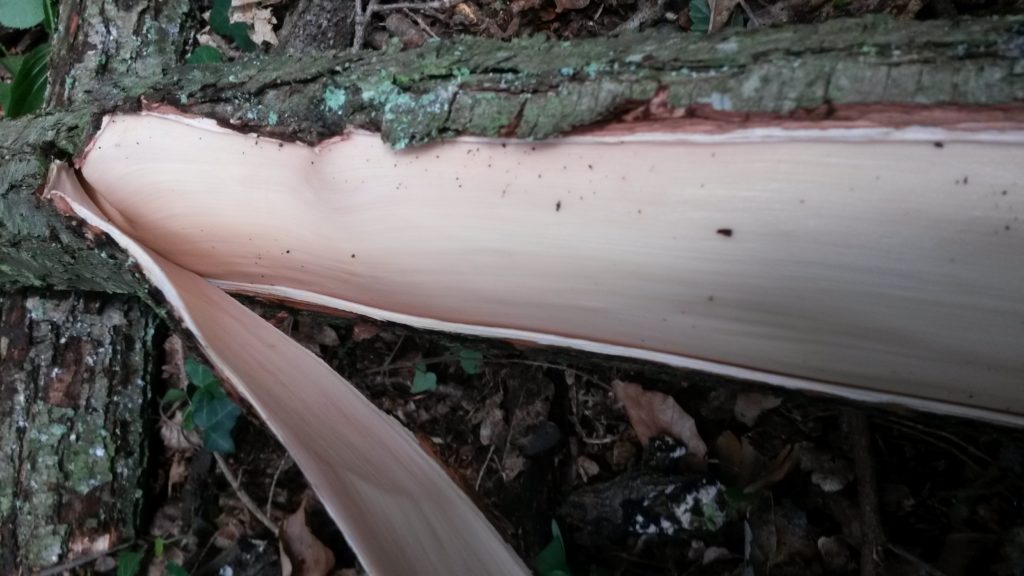
Next learning was that the phloem has to be separated as soon as the trees are cut. I tried to separate the phloem one day after the cutting, which proved almost impossible compared to the separation immediately after the cutting when the juices are still flowing. The best thing is, therefore, to remove the bark (containing the phloem) immediately after cutting the trees. Branches or whole trees should be around 10-20 cm in diameter, to allow easier handling and still to ensure phloem thick enough to be easily separable. You can see some of the bark peeling on the pictures below, to get an idea of the thickness of the bark. Since the bark is still relatively thin, you can use a strong knife or a small axe to cut it, and then just peeling by hand.
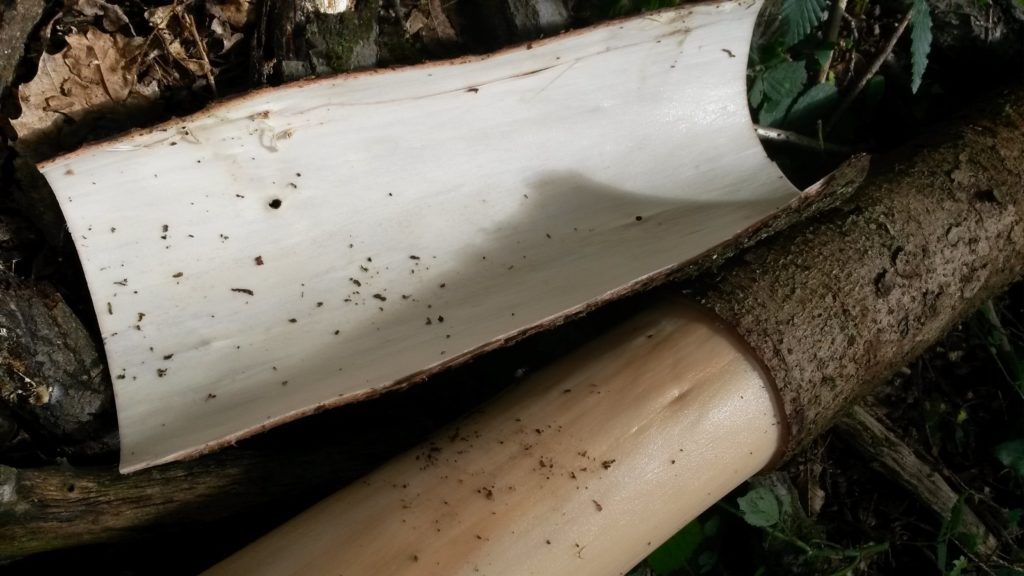
The white part under the peeled bark is the phloem. Where it ends is hard to determine, but in general, everything white is the phloem. The easiest way to separate is to cut the bark in long stipes and separate the phloem with a sharp knife. The separation is easiest if stripes are 2-4 mm thick – another usefulness of using relatively thin bark coming from branches or small trees. The process is fairly easy and can be done by comfortably sitting behind a desk – take a look at the pictures below.
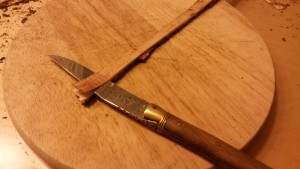
Once you have the stripes of phloem, they have to be dried, to preserve the potential sugars (and other nutrients) and to be able to further process them to phloem flour. The trick in getting the flour form the dried strips is to reduce the size slowly. It just does not work is you throw the strips in the blender and blend away. Phloem is still a part of a tree – and everybody knows that wood tends to be really resistant to breaking and size reduction due to its fibrous structure.
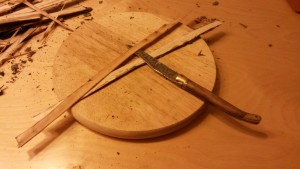
So, the first step is to cut the stripes with scissors or something similar to small flakes. This flakes can be then grinded in a blender, but do not expect them to be completely grinded – usually, only a part is grinded. Next step is to separate the blender content by size – usually by sieving – in bigger and smaller particles. Bigger can be grinded again, then separated,… In this way, all bigger flakes can be reduced to smaller ones. Now, this smaller ones are grinded again and separated by another sieve. This cycle can be repeated until the desired particle size is reached. Different sizes of phloem flakes/flour can be seen on the pictures below.
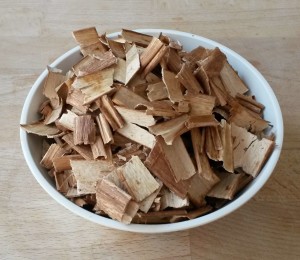
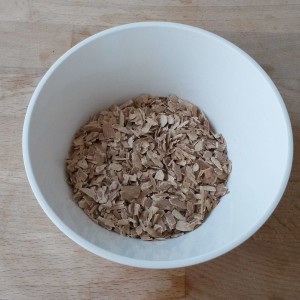
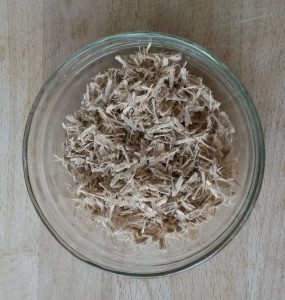
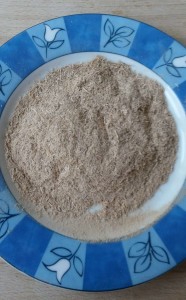
With this stepwise method, the phloem can be grinded to flour, which can then be used to bake the bread. I added a quarter (25%) of phloem flour and three-quarters of regular flour and made a standard bread dough – i.e. adding salt, yeast, sugar (a bit, to get the yeast started) and water. The dough was not much different than usual, maybe a little more sticky, and definitely darker with the smell of wood. I formed small loaves and baked them at 220 °C for 30-45 minutes. The result looked like bread but tasted nothing like it – the taste was strong, tasting of pine and tannins. It could be eaten, but it is not really a gourmet experience. The taste did lose its edge the next day but it was still there.
All in all, I can conclude that you could definitely survive with this bread, but baking it for pleasure is not something that I envision myself doing. Although I must admit, it is a nice surprise for friends and family, due to its unique taste.
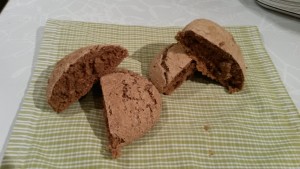
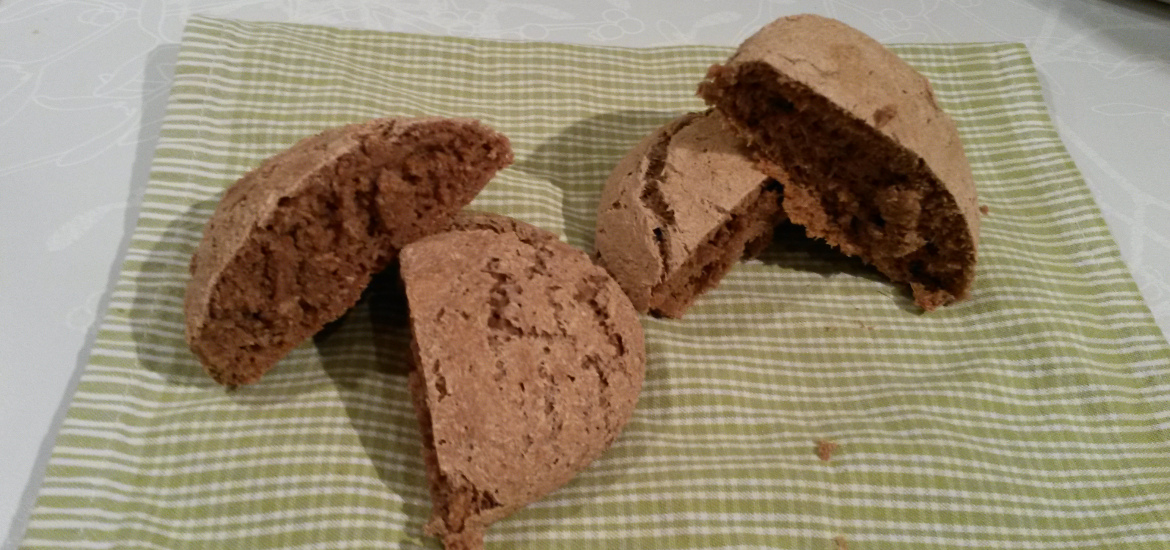
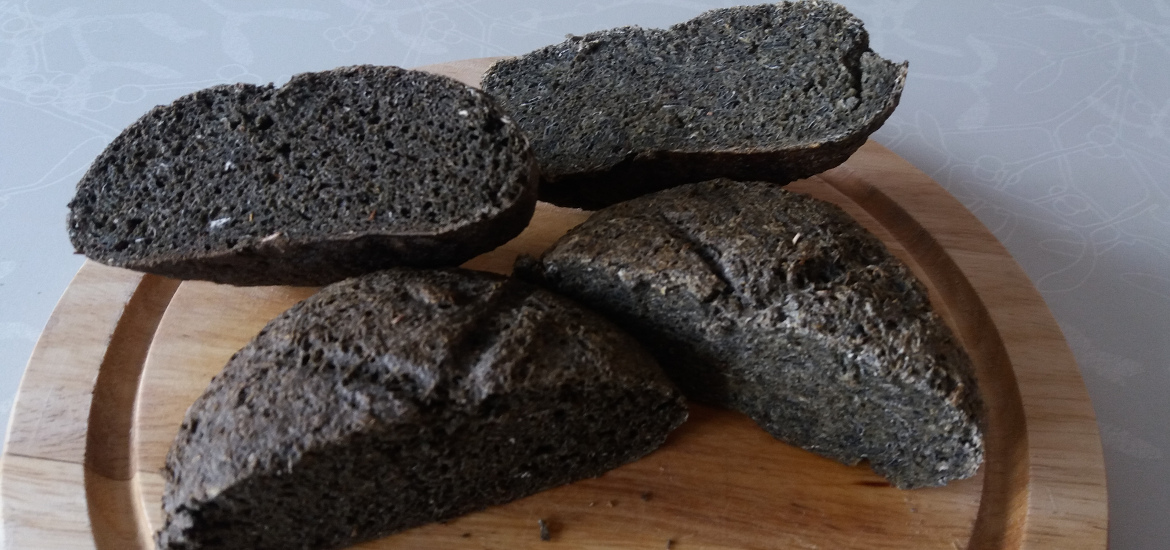
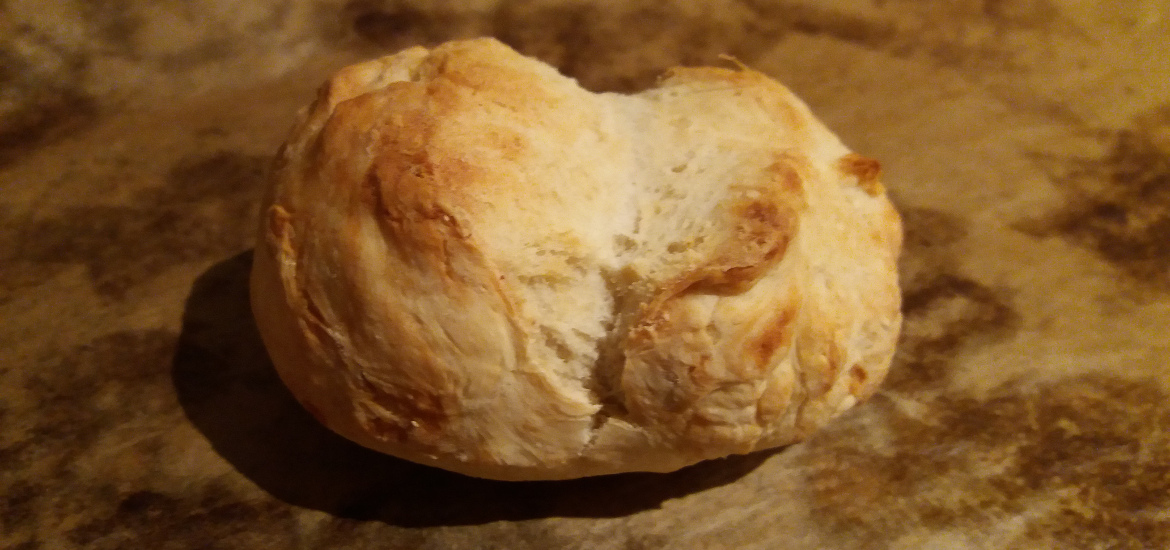
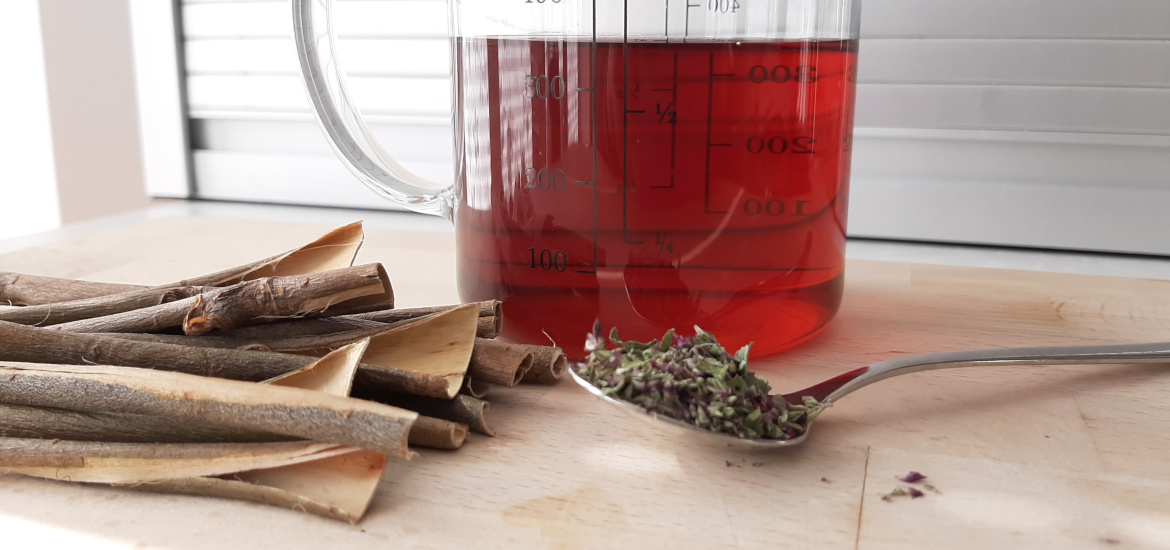
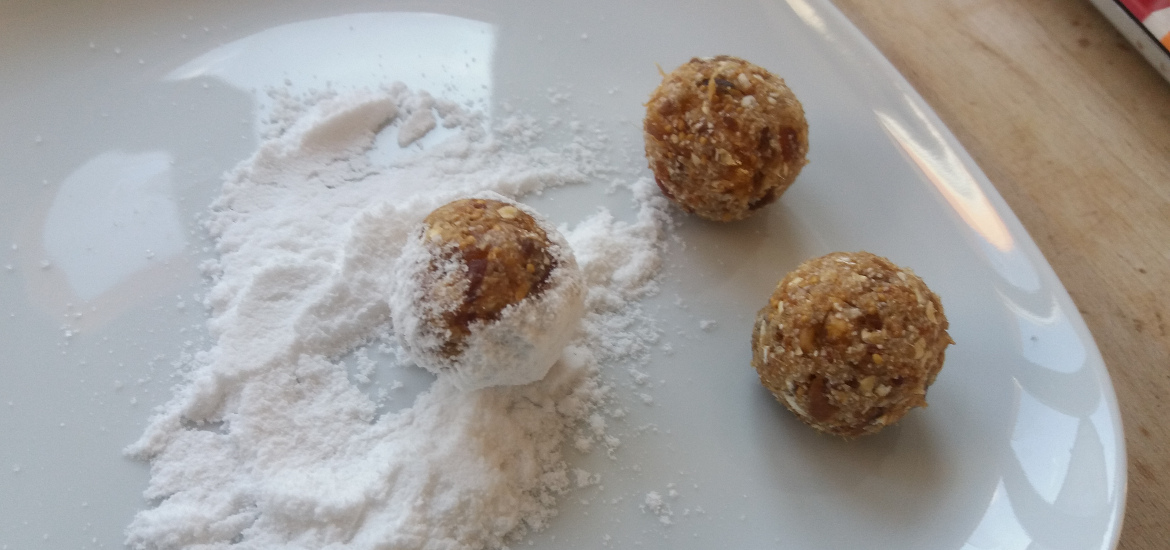
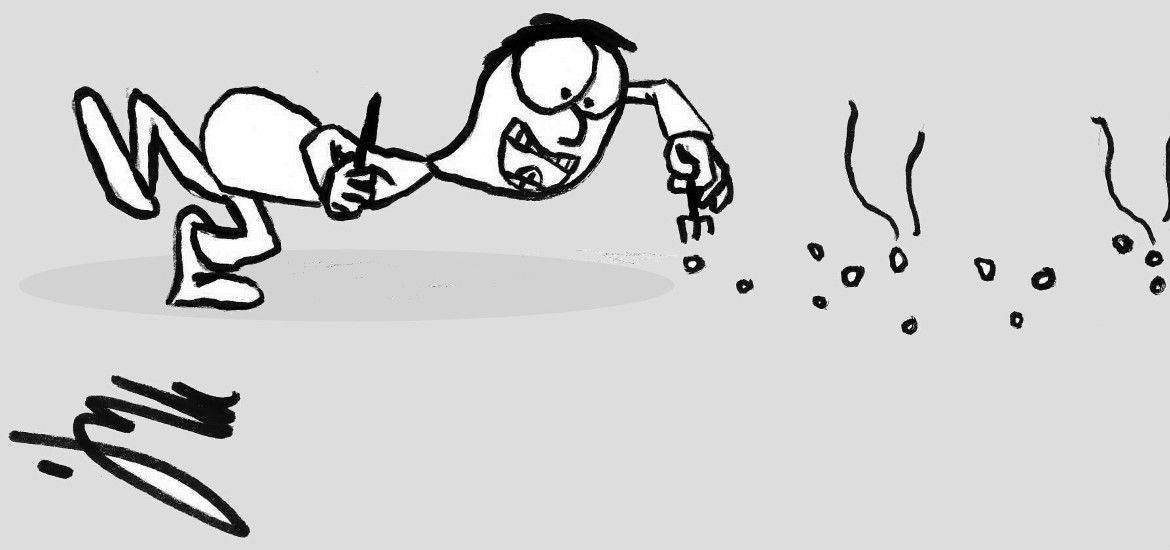
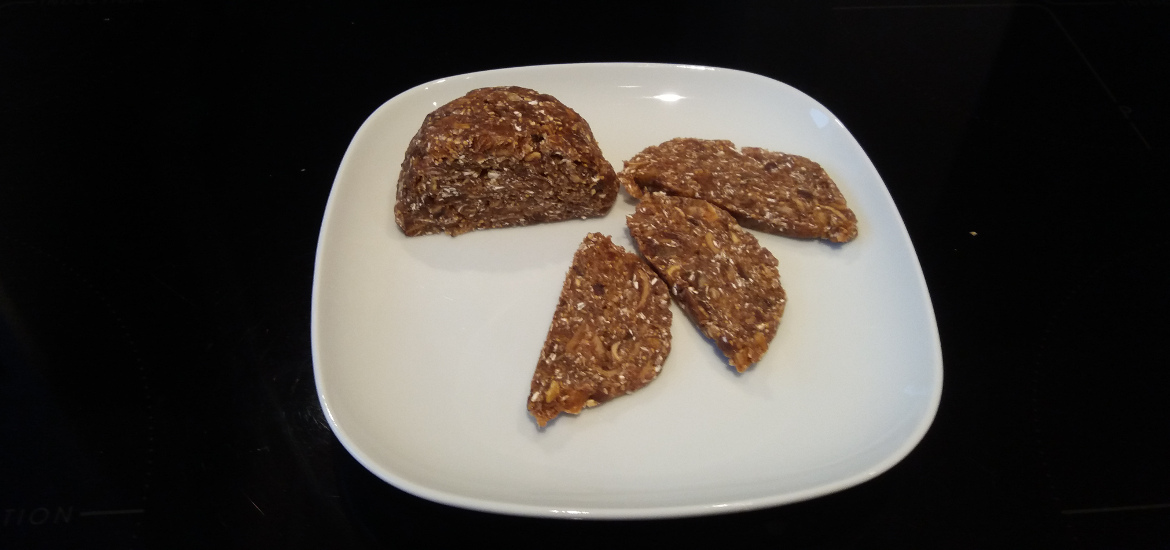
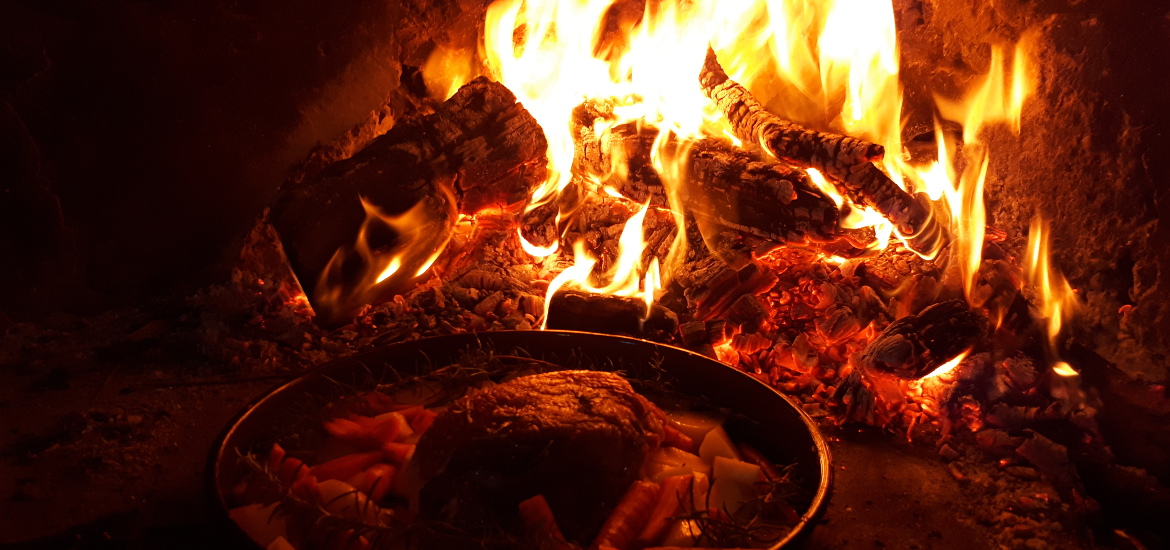
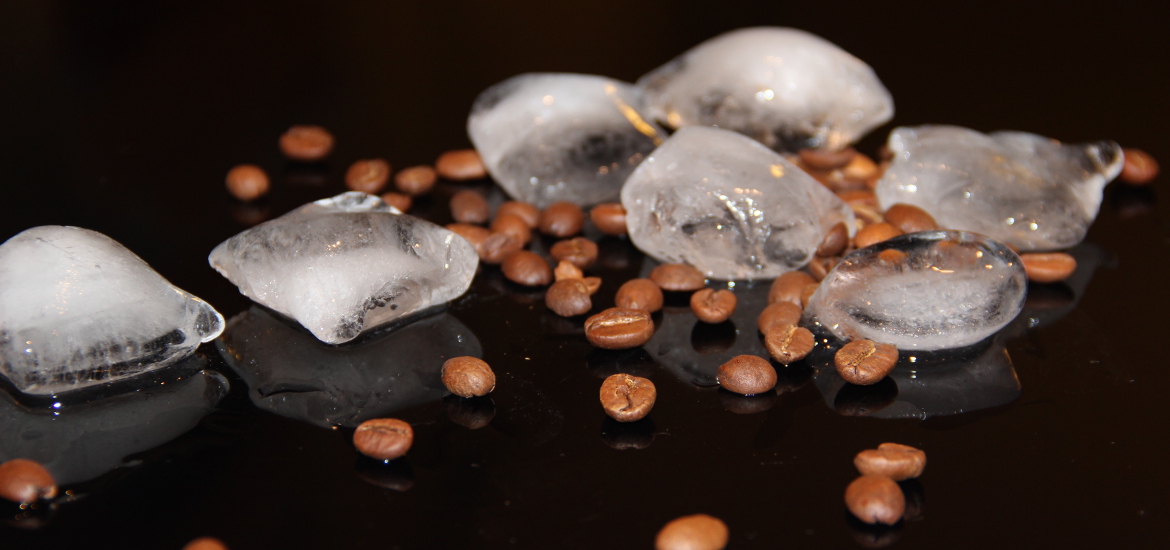
Thank you for sharing. Which kinds of trees can be used?
Great question – I would guess all kind trees are potential candidates. But trees with low tannins and raisins are definitely preferable – like lime tree or birch – since the taste is relatively neutral. I used chestnut and spruce, both had *really* strong taste. Although spruce was relatively enjoyable, once you got used to it.
I find you just dry the inner bark and snap it or crush it into small pieces before grinding, no need to cut it at all it just brake down easily.
Hi, this sounds also as a good option. In my case the bark slices were quite flexible and could not be crushed easily. But I agree with you – if you can just break the bark, this is by far the fastest and easiest way.
*breaks